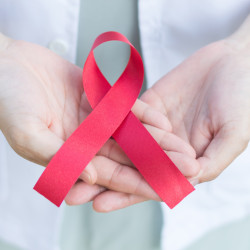For cancer diagnosis, your doctor could use one or more of the following methods to diagnose cancer:
Physical examination: Your doctor may feel around your skin for lumps that could be cancerous. During a medical examination, your physician may notice changes that may indicate the presence of cancer, such as modifications in skin color or augmentation of an organ.
Laboratory examinations: Urine and blood tests, for example, may assist your doctor in identifying abnormalities that may be caused by cancer. A common blood test named a complete blood count, for example, may demonstrate an unprecedented amount or type of white blood cells in people with cancer.
Imaging tests: Noninvasive imaging tests can help your physician to examine your bone fragments and internal organs. A computerized tomography (CT) scan, ultrasound, positron emission tomography (PET) scan, magnetic resonance imaging (MRI), bone scan, and X-ray are some of the imaging tests used to diagnose cancer.
Biopsy: During a biopsy, your physician collects a tissue sample for laboratory testing. An example can be collected in a variety of ways. Which test method is best for you is determined by the type of cancer and its stage. A biopsy is probably the only way to clearly diagnose cancer.
Doctors examine cell sample data under a microscope in the laboratory. Normal cells appear uniform, with similar dimensions and an orderly arrangement. Cancer cells appear less orderly, with various sizes and no discernible organization.
 Treatment
Treatment
There are numerous cancer treatments available. Your alternative therapies will be determined by a number of factors, including the treatment depending on the type of your cancer, your overall health, and your desires. You and your pediatrician can weigh the advantages and disadvantages of each cancer treatment to determine. The aim of treatment is to remove cancer or as much of it as possible.
Chemotherapy is the use of prescription medications to kill cancer cells.
Radiation therapy: To destroy cancer cells, high-powered energy beams such as X-rays and protons are used. Radiation treatment can be delivered from a device outside your skin or from within your body.
Bone marrow transplant: The material from within your bones that produces blood cells is known as bone marrow. A bone marrow transplant can use either your own or donor cells. With a bone marrow transplant, your doctor will be able to use an increasing dosage of chemotherapy to cure your cancer. It could also be used to renew sick bone marrow.
Immunotherapy, biological therapy, employs the immune system of the body to combat cancer. Cancer can thrive in your body unchecked since your immune system does not acknowledge it as an intruder.
Hormone therapy: Your body's hormones can fuel certain types of cancer. Breast cancer and prostate cancer are two examples.
Targeted drug therapy: It focuses on specific malformations within cancer cells that enable them to survive.
Clinical trials are studies that have looked into new ways of treating cancer. Thousands of clinical studies are currently taking place
Frequently Asked Question
How to diagnose cancer?
Using one or more of the following methods to diagnose cancer: physical examination, laboratory examinations, imaging tests, and biopsy.
How can we find to cure for cancer?
There are a variety of cancer treatments available. A variety of factors will influence your alternative therapies, including the type of cancer you have, your overall health, and your preferences.
How to treat cancer?
Chemotherapy, immunotherapy, radiation therapy, and targeted drug therapy are some of the ways of treatment of cancer.
 English
English  Indonesian
Indonesian  Urdu
Urdu  Taiwanese
Taiwanese  Russian
Russian  Romanian
Romanian  Portuguese
Portuguese  Persian
Persian  Macedonian
Macedonian  Korean
Korean  Japanese
Japanese  Italian
Italian  Indian
Indian  Hungarian
Hungarian  Greek
Greek  German
German  Croatian
Croatian  Chinese
Chinese  Bulgarian
Bulgarian  Arabic
Arabic  French
French  Spanish
Spanish 
 Treatment
Treatment